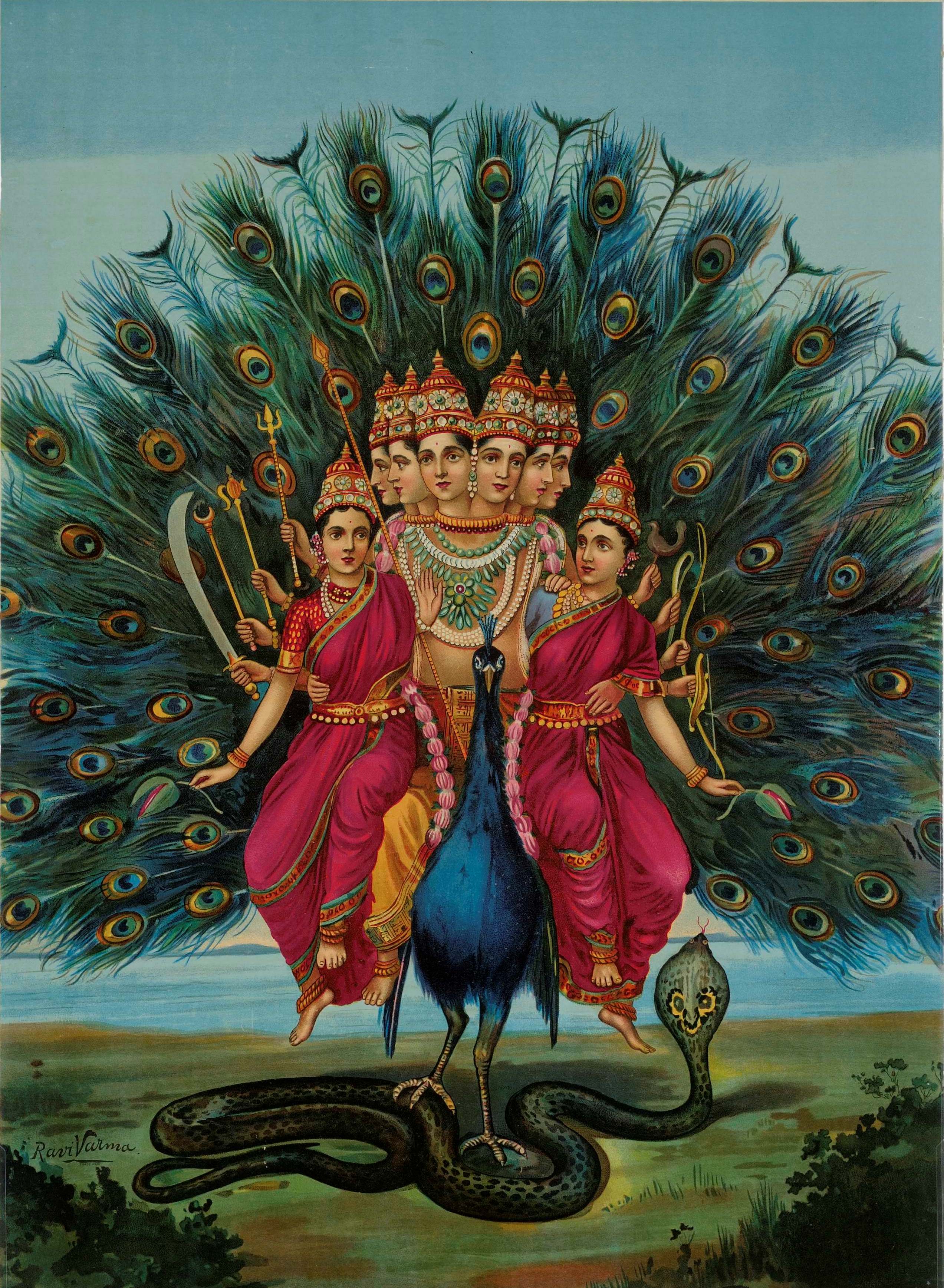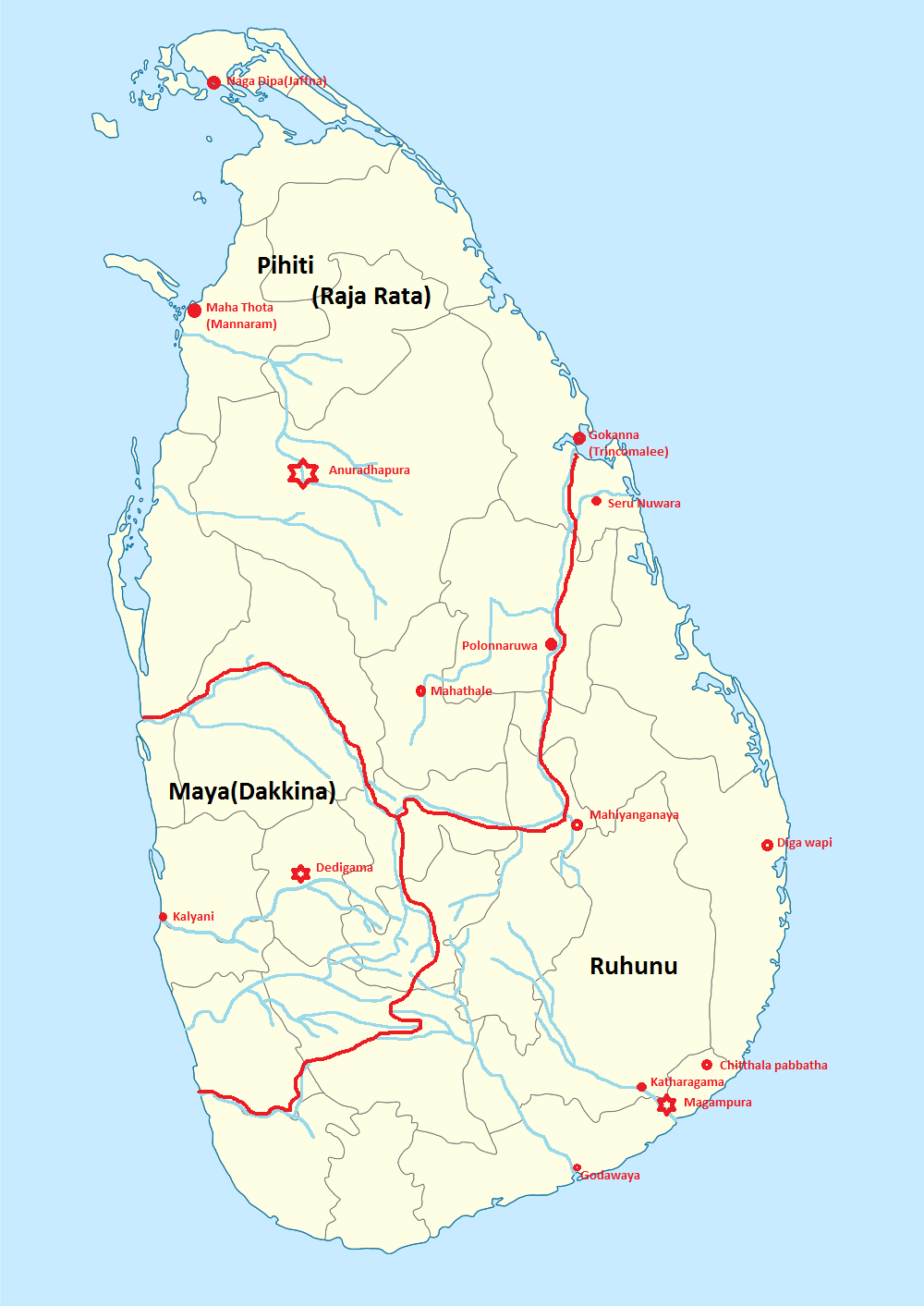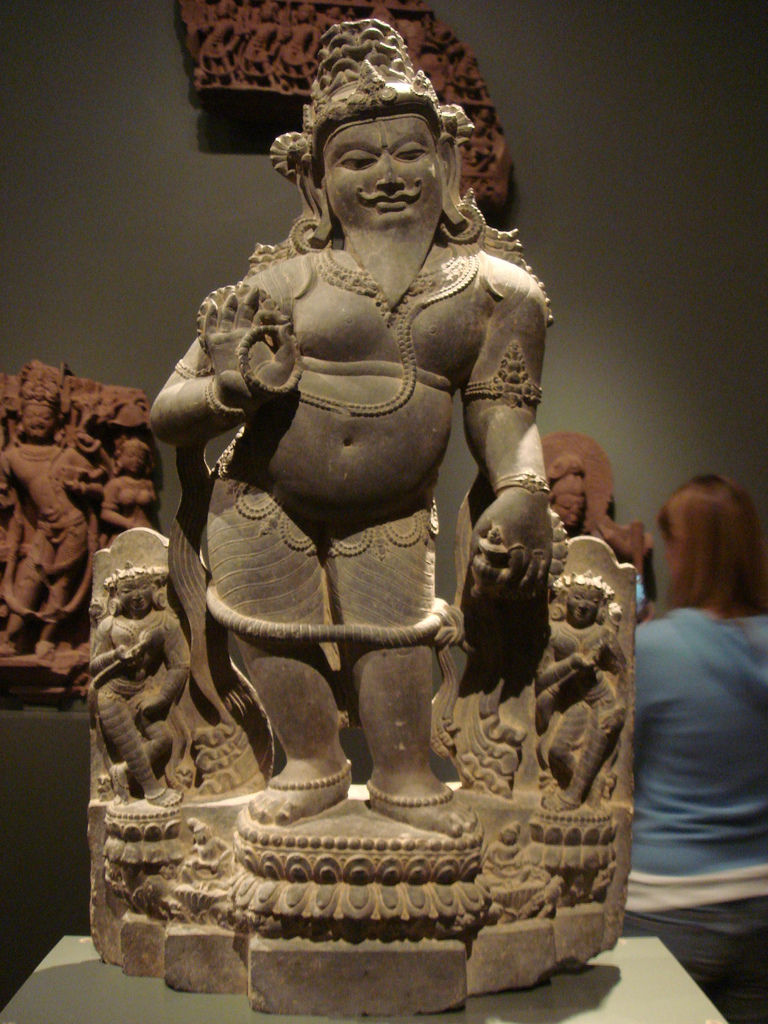|
Kataragama Deviyo
Kataragama deviyo (also called: Skanda Kumara, Kartikeya, si, කතරගම දෙවියෝ) is a guardian deity of Sri Lanka. A popular deity who is considered to be very powerful, shrines dedicated to Kataragama deviyo are found in many places of the country. Sinhalese Buddhists believe him also as a divine patron of the Buddha Sasana in Sri Lanka. An ancient temple dedicated to ''God Kataragama'', known as '' Ruhunu Maha Kataragama Devalaya'' is situated in the South-Eastern town of Kataragama in Monaragala District of Uva Province. Today ''Ruhunu Maha Kataragama devalaya'' has become a temple which attracts and unites people of different religions and faiths. Thousands of devotees from Sri Lanka and other parts of the world visit this temple daily. Kataragama deviyo is identified with ''God Skanda'' of Hindu tradition, who is called as ''Murugan'' by the Tamil people. There is also an identical guardian deity of Mahayana Buddhism, known as Skanda. Theosophists ident ... [...More Info...] [...Related Items...] OR: [Wikipedia] [Google] [Baidu] |
Murugan By Raja Ravi Varma
Kartikeya ( sa, कार्त्तिकेय, Kārttikeya), also known as Skanda, Subrahmanya, Shanmukha (), and Murugan ( ta, முருகன்), is the Hindu god of war. He is the son of Parvati and Shiva, the brother of Ganesha and a god whose legends have many versions in Hinduism. Kartikeya has been an important deity in the Indian subcontinent since ancient times, worshipped as Mahasena and Kumara in North India and is predominantly worshipped in the state of Tamil Nadu and other parts of South India, Sri Lanka, Singapore, and Malaysia as Murugan. Murugan is widely regarded as the "God of the Tamil people". It has been postulated that the Tamil deity of Murugan was syncretised with the Vedic deity of Subrahmanya following the Sangam era. Both Muruga and Subrahmanya refer to Kartikeya. The iconography of Kartikeya varies significantly; he is typically represented as an ever-youthful man, riding or near an Indian peafowl, called Paravani, bearing a vel and so ... [...More Info...] [...Related Items...] OR: [Wikipedia] [Google] [Baidu] |
Mount Kailash
Mount Kailash (also Kailasa; ''Kangrinboqê'' or ''Gang Rinpoche''; Standard Tibetan, Tibetan: གངས་རིན་པོ་ཆེ; ; sa, कैलास, ), is a mountain in the Ngari Prefecture, Tibet Autonomous Region of China. It has an altitude of . It lies in the Gangdise Shan, Kailash Range (Gangdisê Mountains) of the Transhimalaya, in the western part of the Tibetan Plateau. Mount Kailash is less than 100 km towards the north from the western trijunction of the borders of China, India, and Nepal. Mount Kailash is located close to Lake Manasarovar and Lake Rakshastal. The sources of four major Asian rivers lie close to this mountain and the two lakes. These rivers are the Indus River, Indus, the Sutlej, the Brahmaputra River, Brahmaputra, and the Karnali River, Karnali (a tributary of the Ganges). Mount Kailash is considered sacred in four religions: Hinduism, Buddhism, Jainism and Bon. Etymology The mountain is known as “'” (; var. ' ) in Sanskrit. The nam ... [...More Info...] [...Related Items...] OR: [Wikipedia] [Google] [Baidu] |
Abstinence
Abstinence is a self-enforced restraint from indulging in bodily activities that are widely experienced as giving pleasure. Most frequently, the term refers to sexual abstinence, but it can also mean abstinence from alcohol, drugs, food, etc. Because the regimen is intended to be a conscious act, freely chosen to enhance life, abstinence is sometimes distinguished from the psychological mechanism of repression. The latter is an unconscious state, having unhealthy consequences. Abstinence in religion Abstinence may arise from an ascetic over indulgent, hasidic point of view in natural ways of procreation, present in most faiths, or from a subjective need for spiritual discipline. In its religious context, abstinence is meant to elevate the believer beyond the normal life of desire, to a chosen ideal, by following a path of renunciation. In Judaism, Christianity and Islam, amongst others, pre-marital sex is prohibited. Judaism For Jews, the principal day of fast is Yom Kippur, ... [...More Info...] [...Related Items...] OR: [Wikipedia] [Google] [Baidu] |
Vegetarianism
Vegetarianism is the practice of abstaining from the consumption of meat (red meat, poultry, seafood, insects, and the flesh of any other animal). It may also include abstaining from eating all by-products of animal slaughter. Vegetarianism may be adopted for various reasons. Many people object to eating meat out of respect for sentient animal life. Such ethical motivations have been codified under various religious beliefs as well as animal rights advocacy. Other motivations for vegetarianism are health-related, political, environmental, cultural, aesthetic, economic, taste-related, or relate to other personal preferences. There are many variations of the vegetarian diet: an ovo-lacto vegetarian diet includes both eggs and dairy products, an ovo-vegetarian diet includes eggs but not dairy products, and a lacto-vegetarian diet includes dairy products but not eggs. As the strictest of vegetarian diets, a vegan diet excludes all animal products, and can be accompanied by absten ... [...More Info...] [...Related Items...] OR: [Wikipedia] [Google] [Baidu] |
Yala National Park
Yala (යාල) National Park is the most visited and second largest national park in Sri Lanka, bordering the Indian Ocean. The park consists of five blocks, two of which are now open to the public, and also adjoining parks. The blocks have individual names such as, Ruhuna National Park (Block 1), and Kumana National Park or 'Yala East' for the adjoining area. It is situated in the southeast region of the country, and lies in Southern Province and Uva Province. The park covers and is located about from Colombo. Yala was designated as a wildlife sanctuary in 1900, and, along with Wilpattu was one of the first two national parks in Sri Lanka, having been designated in 1938. The park is best known for its variety of wild animals. It is important for the conservation of Sri Lankan elephants, Sri Lankan leopards and aquatic birds. There are six national parks and three wildlife sanctuaries in the vicinity of Yala. Among the largest is Lunugamvehera National Park. The park is situ ... [...More Info...] [...Related Items...] OR: [Wikipedia] [Google] [Baidu] |
Meditation
Meditation is a practice in which an individual uses a technique – such as mindfulness, or focusing the mind on a particular object, thought, or activity – to train attention and awareness, and achieve a mentally clear and emotionally calm and stable state. Meditation is practiced in numerous religious traditions. The earliest records of meditation (''dhyana'') are found in the Upanishads, and meditation plays a salient role in the contemplative repertoire of Jainism, Buddhism and Hinduism. Since the 19th century, Asian meditative techniques have spread to other cultures where they have also found application in non-spiritual contexts, such as business and health. Meditation may significantly reduce stress, anxiety, depression, and pain, and enhance peace, perception, self-concept, and well-being. Research is ongoing to better understand the effects of meditation on health (psychology, psychological, neurology, neurological, and cardiovascular) and other areas. Etymol ... [...More Info...] [...Related Items...] OR: [Wikipedia] [Google] [Baidu] |
Kiri Vehera
Kiri Vehera is an ancient stupa situated in Kataragama, Sri Lanka. This stupa probably dates back to the 3rd century BC and is believed to have been built by King Mahasena, a regional ruler of Kataragama area. One of the most popular Buddhist pilgrimage sites in the country, Kiri Vehera is among the Solosmasthana, the 16 most sacred Buddhist pilgrimage sites of ancient Sri Lanka. This stupa which is 95 ft. in height with a circumference of 280 ft. is located 800 m North to the famous Ruhunu Maha Kataragama Devalaya. Venerable Kobawaka Dhamminda Thera is the present Chief Prelate of Kirivehera Rajamaha Viharaya. Daily Mirror See also * |
Kingdom Of Ruhuna
The Principality of Ruhuna, also referred to as the Kingdom of Ruhuna, is a region of present-day Southern and Eastern Sri Lanka. It was the center of a flourishing civilisation and the cultural and economic centres of ancient Sri Lanka. Magama, Tissamaharama and Mahanagakula (now called as Ambalantota) were established here. The kingdom of Ruhuna was an important state in Sinhalese history as it was known for several rebellions against the superior states in Rajarata. The principality was defeated with its last de-facto Queen Sugala been captured and executed by the invading army of Parakramabahu I. Following its annexing by Parakramabahu, the rebellions that arose were suppressed. History Founding Ruhuna was founded around 200 BC by Prince Mahanaga, brother to Devanampiya Tissa of Anuradhapura, after a personal dispute. This region played a vital role in building the nation as well in the establishment of Buddhist culture. Significance The kings of Anuradhapura and the Chola ... [...More Info...] [...Related Items...] OR: [Wikipedia] [Google] [Baidu] |
Gautama Buddha
Siddhartha Gautama, most commonly referred to as the Buddha, was a wandering ascetic and religious teacher who lived in South Asia during the 6th or 5th century BCE and founded Buddhism. According to Buddhist tradition, he was born in Lumbini, in what is now Nepal, to royal parents of the Shakya clan, but renounced his home life to live as a wandering ascetic ( sa, śramaṇa). After leading a life of begging, asceticism, and meditation, he attained enlightenment at Bodh Gaya in what is now India. The Buddha thereafter wandered through the lower Indo-Gangetic Plain, teaching and building a monastic order. He taught a Middle Way between sensual indulgence and severe asceticism, leading to Nirvana, that is, freedom from ignorance, craving, rebirth, and suffering. His teachings are summarized in the Noble Eightfold Path, a training of the mind that includes meditation and instruction in Buddhist ethics such as right effort, mindfulness, and '' jhana''. He di ... [...More Info...] [...Related Items...] OR: [Wikipedia] [Google] [Baidu] |
Nadi Astrology
Nādi Astrology (') is a form of astrology practiced in Tamil Nadu and adjacent regions in India. It is based on the belief that the present lives of many humans were foreseen by Hindu sages in ancient times. History In Tamil Nadu, the texts are mainly written in ''Vatteluttu'', which was an abugida script used to write Tamil up until the 12th century CE. The content of the manuscripts is often attributed to the Vedic sage Agastya who is believed to have possessed a highly developed consciousness. These ancient records of providence were made famous by practitioners around the Vaitheeshwaran Temple in the state of Tamil Nadu. First, the Nadi palm leaves are located based on thumb impressions (right for men, left for women). These Nadi leaves were initially stored on the premises of Thanjavur's Saraswati Mahal Library in Tamil Nadu. The British colonialists later showed interest in the Nadi leaves concerned with herbs and medicine, future prediction, etc. Some leaves got dest ... [...More Info...] [...Related Items...] OR: [Wikipedia] [Google] [Baidu] |
Balangoda Ananda Maitreya Thero
Balangoda Ananda Maitreya Thero ( si, අග්ග මහා පණ්ඩිත බලංගොඩ ආනන්ද මෛත්රෙය මහා නා හිමි;23 August 1896 – 18 July 1998; was a Sri Lankan Buddhist monk who was one of the most distinguished scholars and expositors of Theravada Buddhism in the twentieth century. He was highly respected by Sri Lankan Buddhists, who believed that he had achieved a higher level of spiritual development. Sri Lankan Buddhists also considered Balangoda Ananda Maitreya Thero as a Bodhisattva, who will attain Buddhahood in a future life. Balangoda Ananda Maitreya Thero lived a modest life and did a great service for the propagation of Buddhist philosophy. In recognition of his valuable service at the Sixth Buddhist council held in Burma, the Burmese government conferred on him the title of Agga Maha Pandita (Chief Great Scholar) in 1956. Later in March 1997, the Burmese government conferred on Balangoda Ananda Maitreya The ... [...More Info...] [...Related Items...] OR: [Wikipedia] [Google] [Baidu] |
Veddah
The Vedda ( si, වැද්දා , ta, வேடர் (''Vēḍar'')), or Wanniyalaeto, are a minority Indigenous peoples, indigenous group of people in Sri Lanka who, among other sub-communities such as Coast Veddas, Anuradhapura Veddas and Bintenne Veddas, are accorded indigenous status. The Vedda minority in Sri Lanka may become completely assimilated. Most speak Sinhala language, Sinhala instead of their indigenous languages, which are nearing extinction. It has been hypothesized that the Vedda were probably the earliest inhabitants of Sri Lanka and have lived on the island since before the arrival of other ethnic groups in India. The Ratnapura District, which is part of the Sabaragamuwa Province, is known to have been inhabited by the Veddas in the distant past. This has been shown by scholars like Nandadeva Wijesekera. The very name ''Sabaragamuwa'' is believed to have meant the village of the ''Sabaras'' or "forest barbarians". Place-names such as ''Vedda-gala'' (Ve ... [...More Info...] [...Related Items...] OR: [Wikipedia] [Google] [Baidu] |






.jpg)

